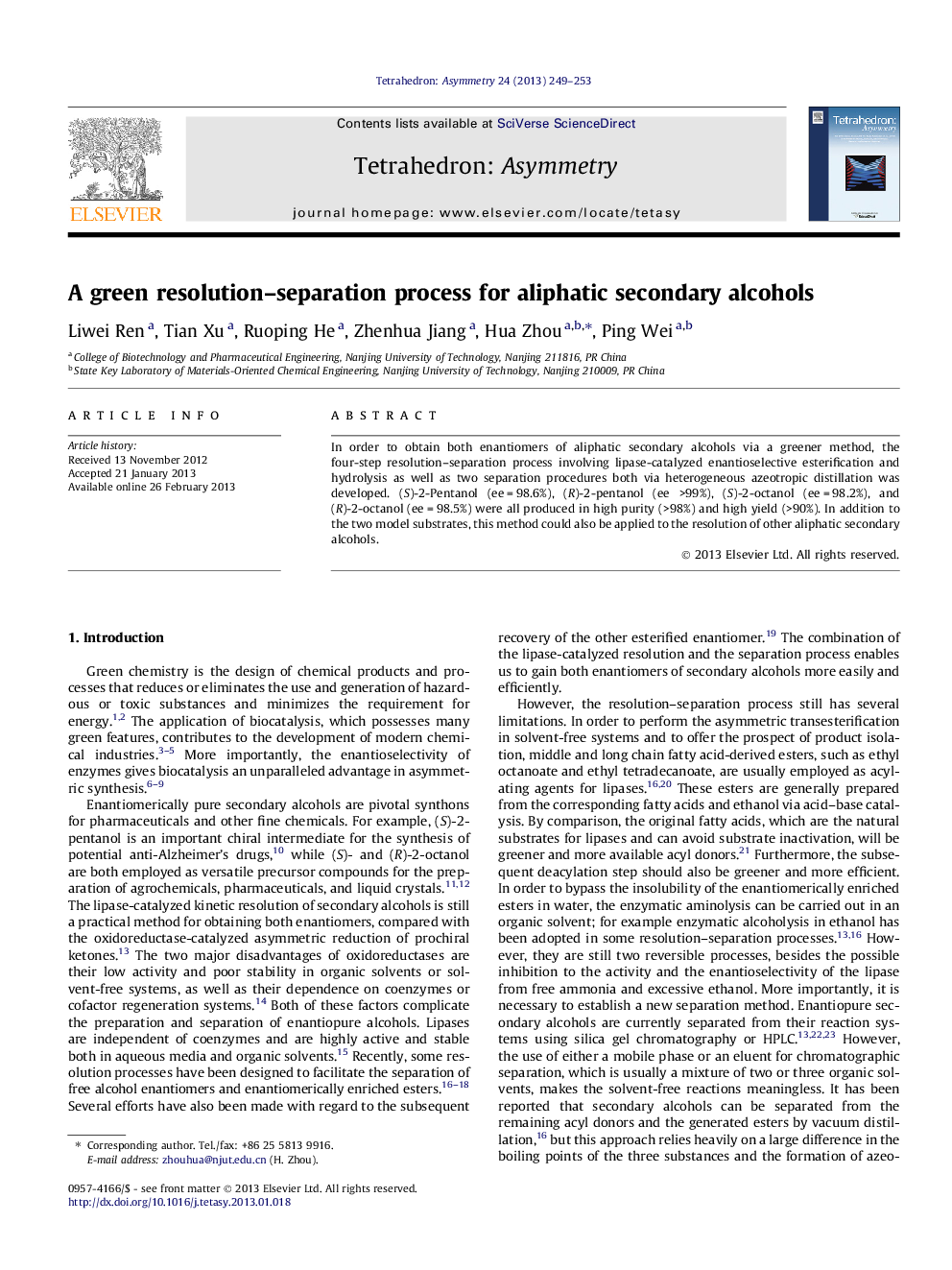| Article ID | Journal | Published Year | Pages | File Type |
|---|---|---|---|---|
| 1345892 | Tetrahedron: Asymmetry | 2013 | 5 Pages |
In order to obtain both enantiomers of aliphatic secondary alcohols via a greener method, the four-step resolution–separation process involving lipase-catalyzed enantioselective esterification and hydrolysis as well as two separation procedures both via heterogeneous azeotropic distillation was developed. (S)-2-Pentanol (ee = 98.6%), (R)-2-pentanol (ee >99%), (S)-2-octanol (ee = 98.2%), and (R)-2-octanol (ee = 98.5%) were all produced in high purity (>98%) and high yield (>90%). In addition to the two model substrates, this method could also be applied to the resolution of other aliphatic secondary alcohols.
Graphical abstractFigure optionsDownload full-size imageDownload as PowerPoint slide
(−)-(R)-2-PentanolC5H12Oee >99% (GC)[α]D28.0=-20.1 (c 0.97, CHCl3)Source of chirality: enzymatic esterificationAbsolute configuration: (R)
(−)-(R)-2-OctanolC8H18Oee = 98.5% (GC)[α]D28.3=-12.3 (c 0.98, CHCl3)Source of chirality: enzymatic esterificationAbsolute configuration: (R)
